Summer 2022
How to Tide Pool
Professor Tara Prestholdt introduces readers to some of her favorite tide pools.
- Story and photos by Tara Prestholdt
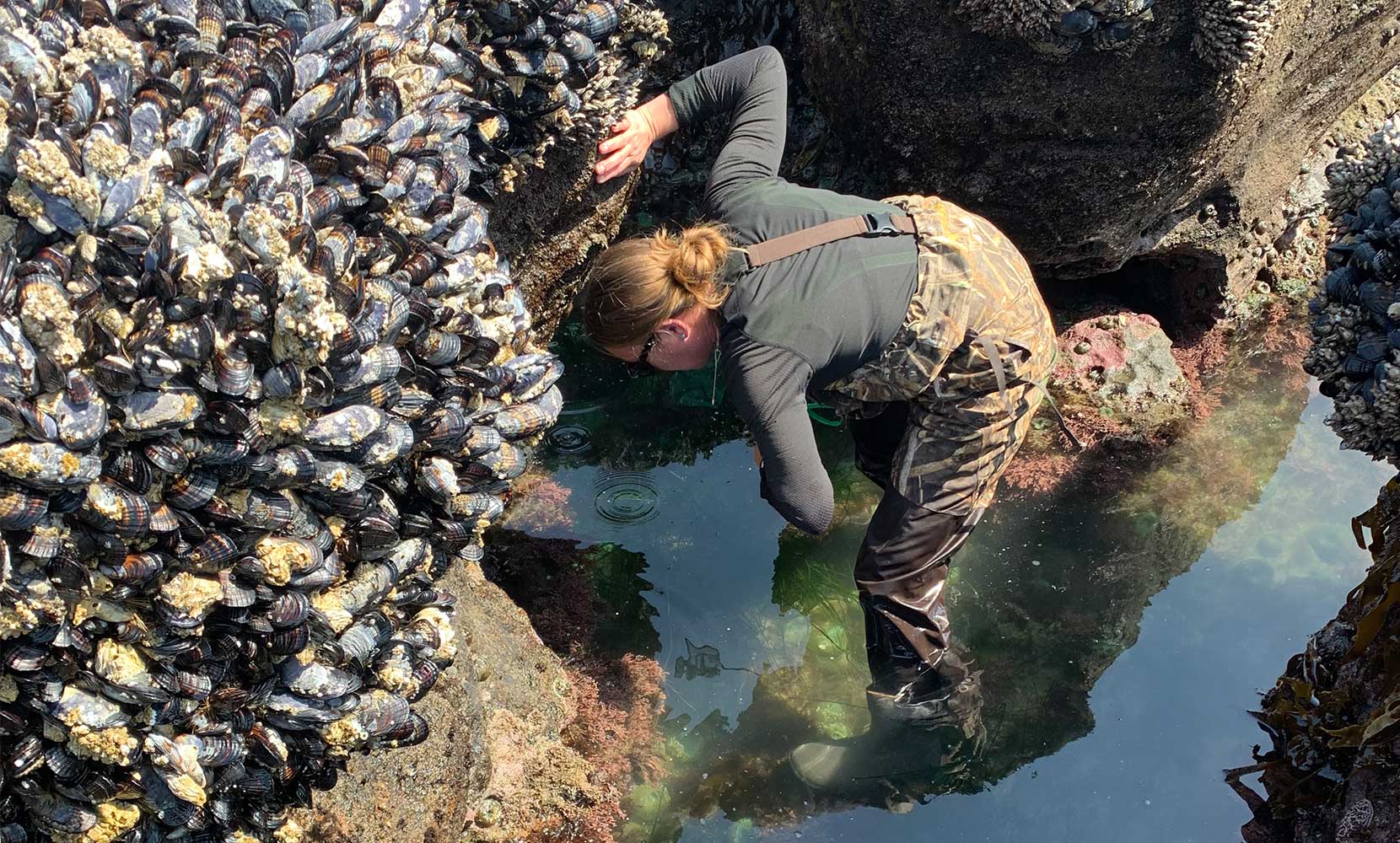
WITH 363 MILES of rugged coastline, Oregon is home to tide pools that are teeming with creatures big and small. Hundreds of species await discovery, many with colors as vibrant as those found in tropical coral reefs. We have urchins that can live more than a century, octopuses so smart they can raid your bait bucket, and algae with holdfasts so strong they can rip small boulders off rocks and carry them up to Canada.
I’ve been visiting our pools every season, every year, for twelve years. And every trip I record who I find as part of a collaboration to understand how anthropogenic change is affecting the animals that live in this remarkably narrow part of the planet—the intertidal zone, where the ocean meets the continents. Since I’ve been watching closely, there have been three significant changes.
First, the loss of the ochre starfish from sea star wasting disease. The disease is caused by a virus, and it decimated the Pacific Northwest populations of starfish. While massive die-offs are concerning for any species, they are particularly distressing with the ochre starfish as it is a keystone species, or a species that is so vital to healthy ecosystems that without it they risk collapse. In fact, the phrase “keystone species” was coined by a marine biologist studying the relationship between the ochre sea star and Pacific bay mussels; without the starfish eating the mussels, the mussels take over and make the rocks uninhabitable for everyone else. Fortunately, the teams of researchers that have been monitoring their populations have data that signal the ochre sea stars will return to healthy population sizes soon.
Second, some species have shifted their ranges due to EÑSO, or El Niño Southern Oscillation, the abbreviation for the unpredictable cycles of warmer temperatures (El Niño) and cooler temperatures (La Niña). The 2014–2016 El Niños were so warm they were renamed marine heatwaves. As a result of the increases in temperature, dozens of species were found farther north than ever before in recorded history, including one species of sea butterfly that was found 870 miles north of its usual locale. It’s currently unknown how the movements of these species towards cooler waters might affect ecosystems longterm, so our monitoring must continue.
And third, plastic waste is gradually accumulating in our rivers, wetlands, tide pools, and open ocean. A recent study published by an undergraduate student and I showed that intertidal crabs prefer to take shelter in natural substrates like rocks or driftwood compared to common litter like Styrofoam, glass, or plastic. It is possible other marine animals show these behaviors as well, and if so, you can be a powerful driver of change; when you tide pool, pick up any pieces of trash you see and tuck them in your pocket. Unlike driftwood, you are free to collect as much of it as you would like.
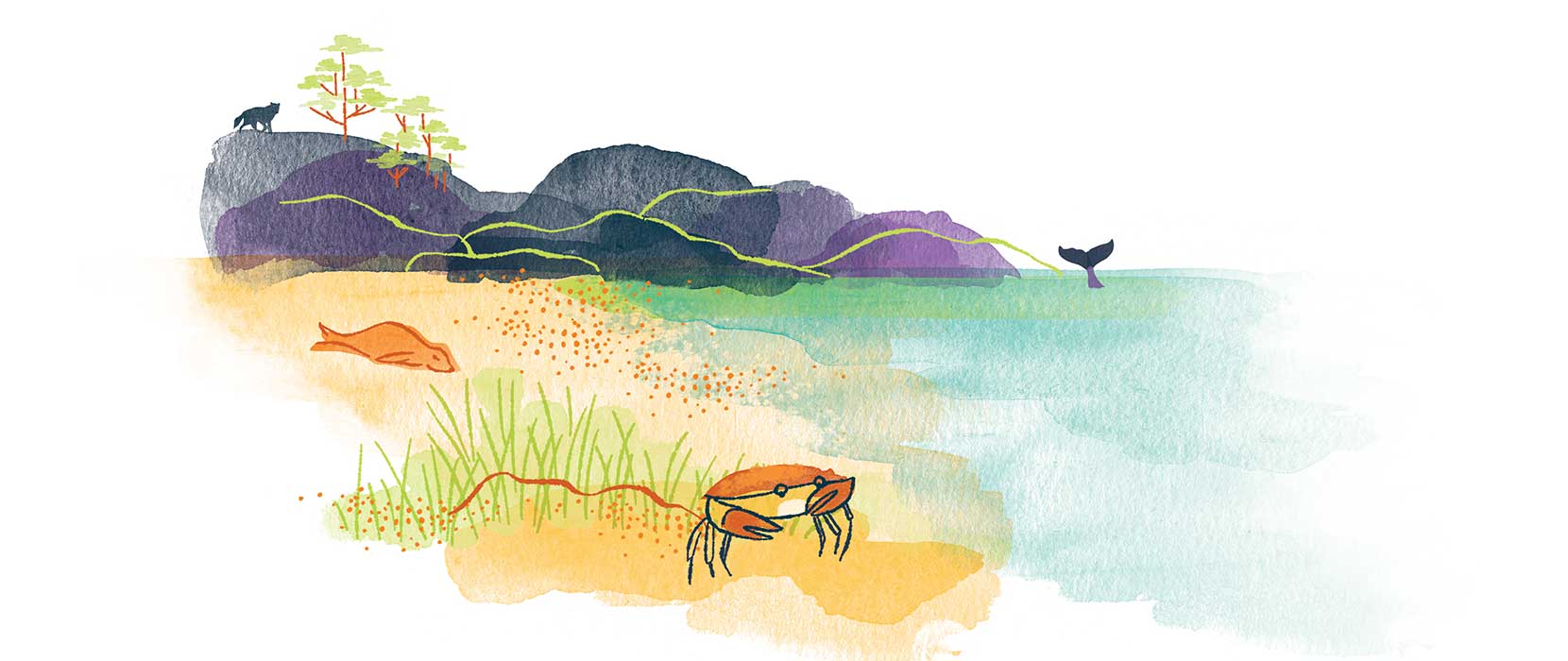
Illustration by Marisol Ortega
Top Five Tide Pool Tips
2. Go slow, for them. Tide pools are full of fragile living beings, many of which have few to no defenses against the rugged treads of your boots or the point of your walking stick; they evolved to handle wave energy and an incredible array of physical conditions, but not the localized pressures of fingers, hands, and feet. Never try to remove an animal or algae that is suctioned to a rock and be gentle when handling free living animals like crabs, gunnels, or sea gooseberries. After you flip a rock to look for the critters hiding underneath, remember to flip it back.
3. Go slow, for you. The pools reward the patient and persistent. After scanning for the animals that easily pop in the scene such as mussels and anemones, crouch down in a still pool and gently brush the seaweed aside. Look inside cracks and abandoned tube worm casings for skeleton shrimp, sculpins, or snailfish. Study the rock itself for sponges, minuscule sea spiders, or colonial moss animals. My favorite smalls to find (1–2 cm) are the Dr. Seussian red hydroids of stalked jellyfish, the translucent sea cherub, or the comical hammerhead doto with its pairs of beaded gills.
4. Great spots on the Oregon Coast include names such as Chinook, Clatsop, Chilwitz, Tillamook, Tualatin, Siletz, Yaquina, Alsea, Siuslaw, Umpqua, and Coquille; these coastal places and waters are named for the tribes that have a long history of caring for and consuming the animals therein. While enjoying the biodiversity of the water’s edge, take a moment to respect and honor the Indigenous peoples and their practices with coastal wildlife, as many coastal species have a rich history with the Pacific Northwest’s Native peoples. For example, the Salish would cook clams over fires and dry them for winter and the Chinookans often traded clams as a form of currency for goods.
5. Mind the mammals. Visiting Oregon tide pools, particularly in Central and Southern Oregon, is nearly synonymous with being in close proximity to seals, sea lions, otters, minks, coyotes, and more. If you are lucky, you could see gray whales feeding on crustaceans just off the coastal shelf. For their safety and yours, it is illegal to approach a marine mammal, and federal law requires you maintain fifty yards between yourself and our blubbered beasts. And remember that it is illegal to remove anything living from Oregon coasts without a scientific permit.
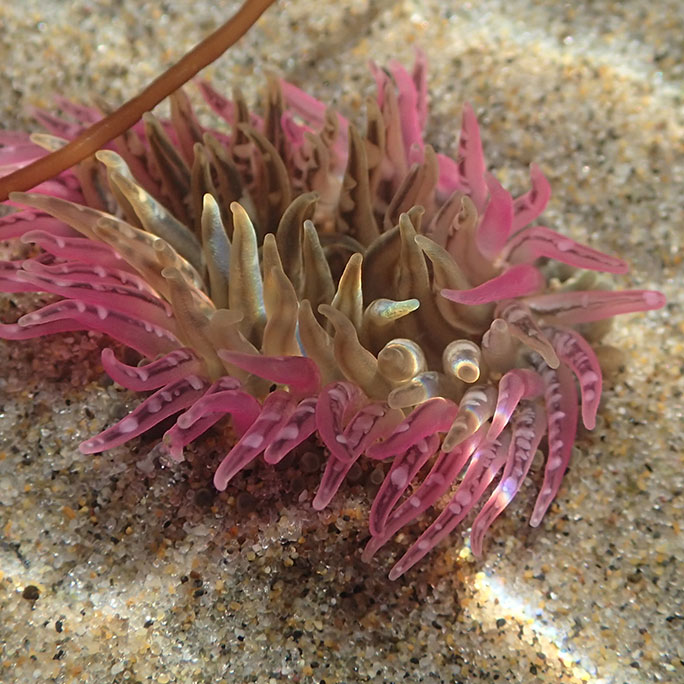
Moon anemone
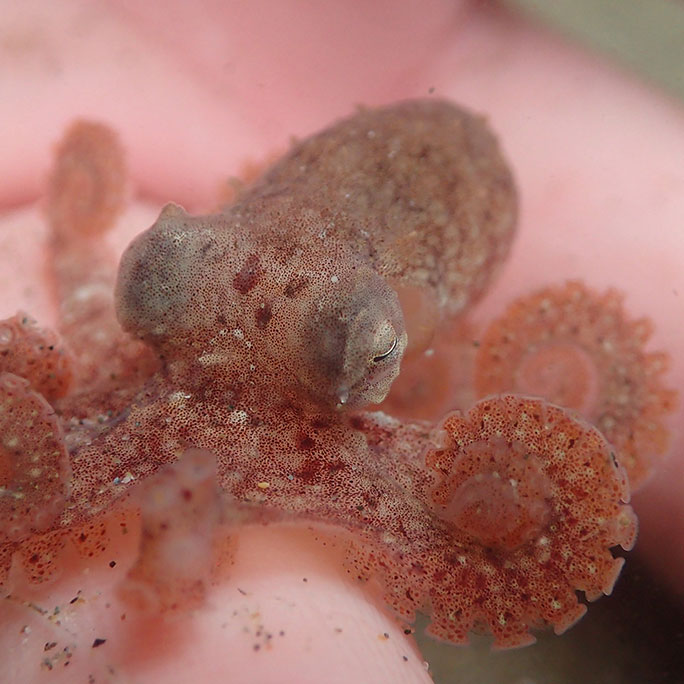
Giant Pacific octopus (baby)
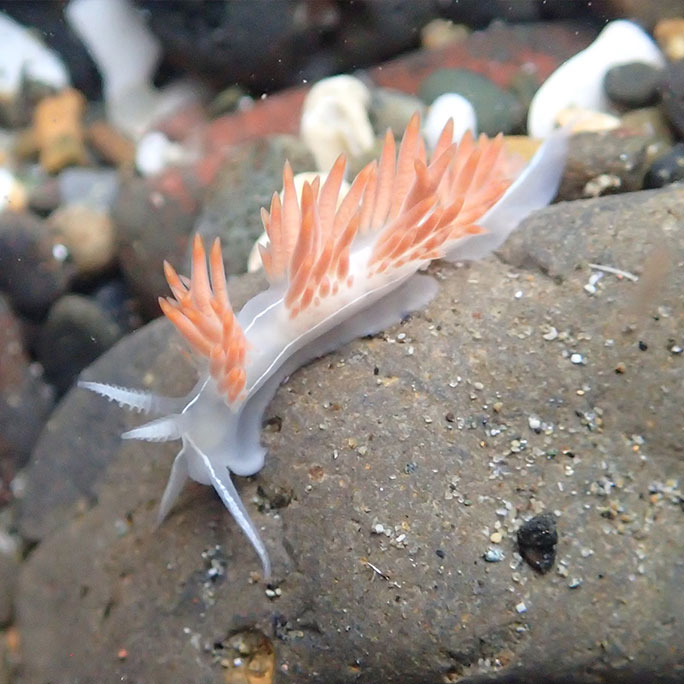
Three lined nudibranch
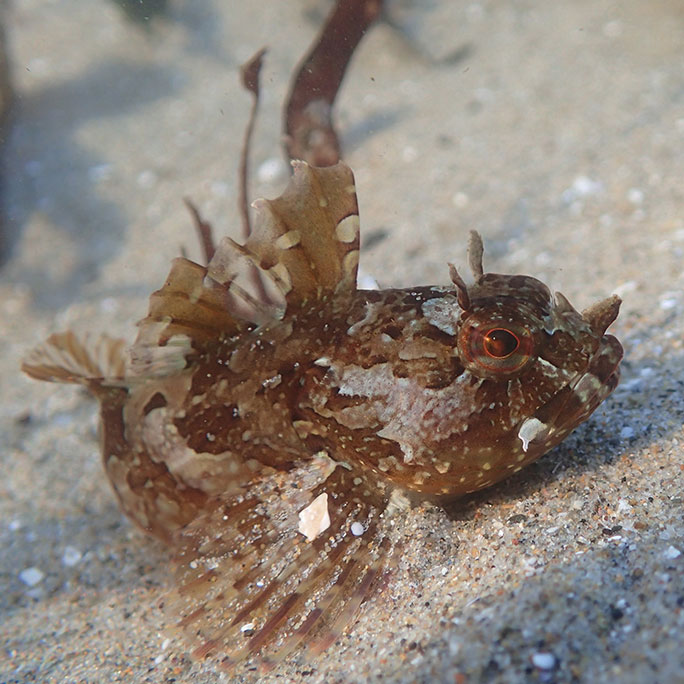
Cabezon
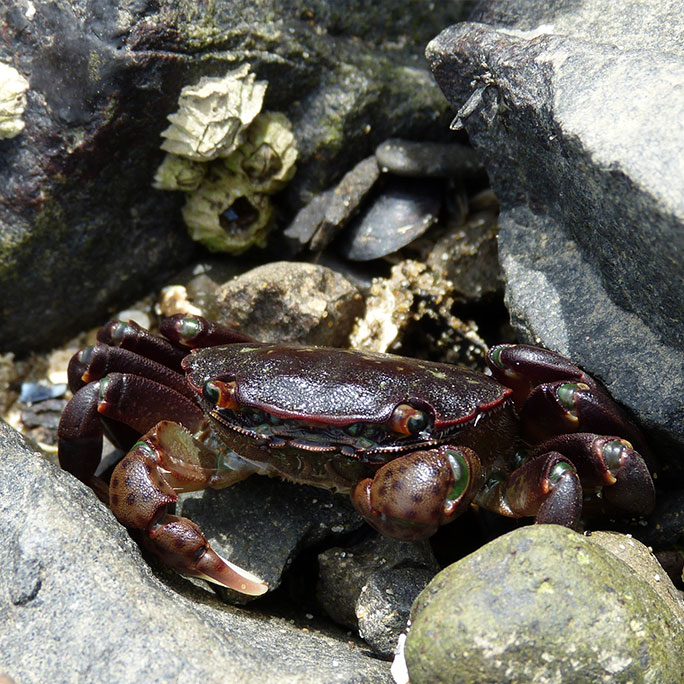
Purple shore crab
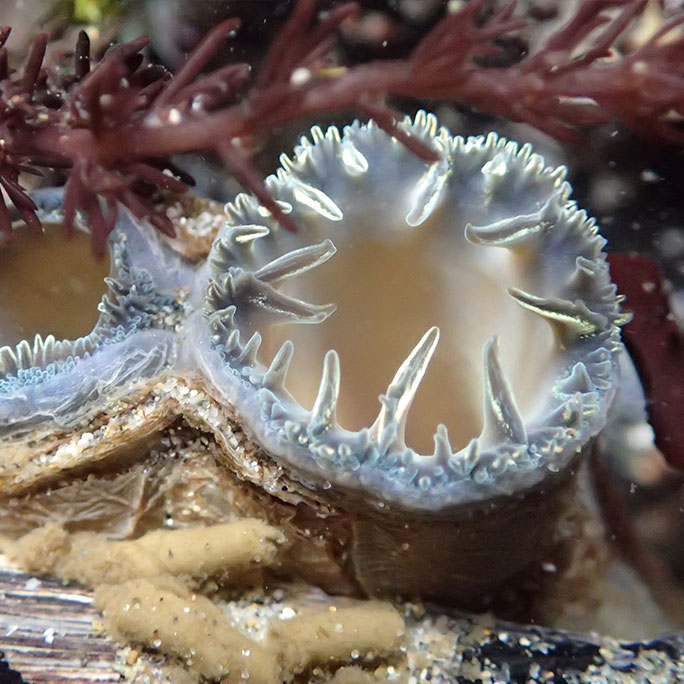
Pacific gaper clam
TARA PRESTHOLDT is a professor of Biology and Environmental Studies. She teaches classes on marine biology and our oceans at UP, and her research focuses on the ecology, evolution, and the future of marine organisms.